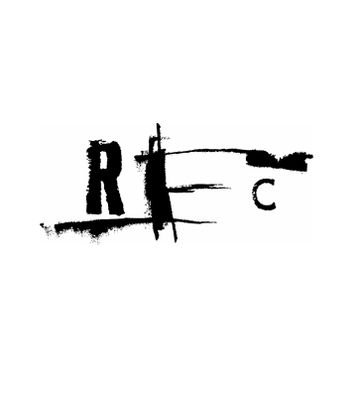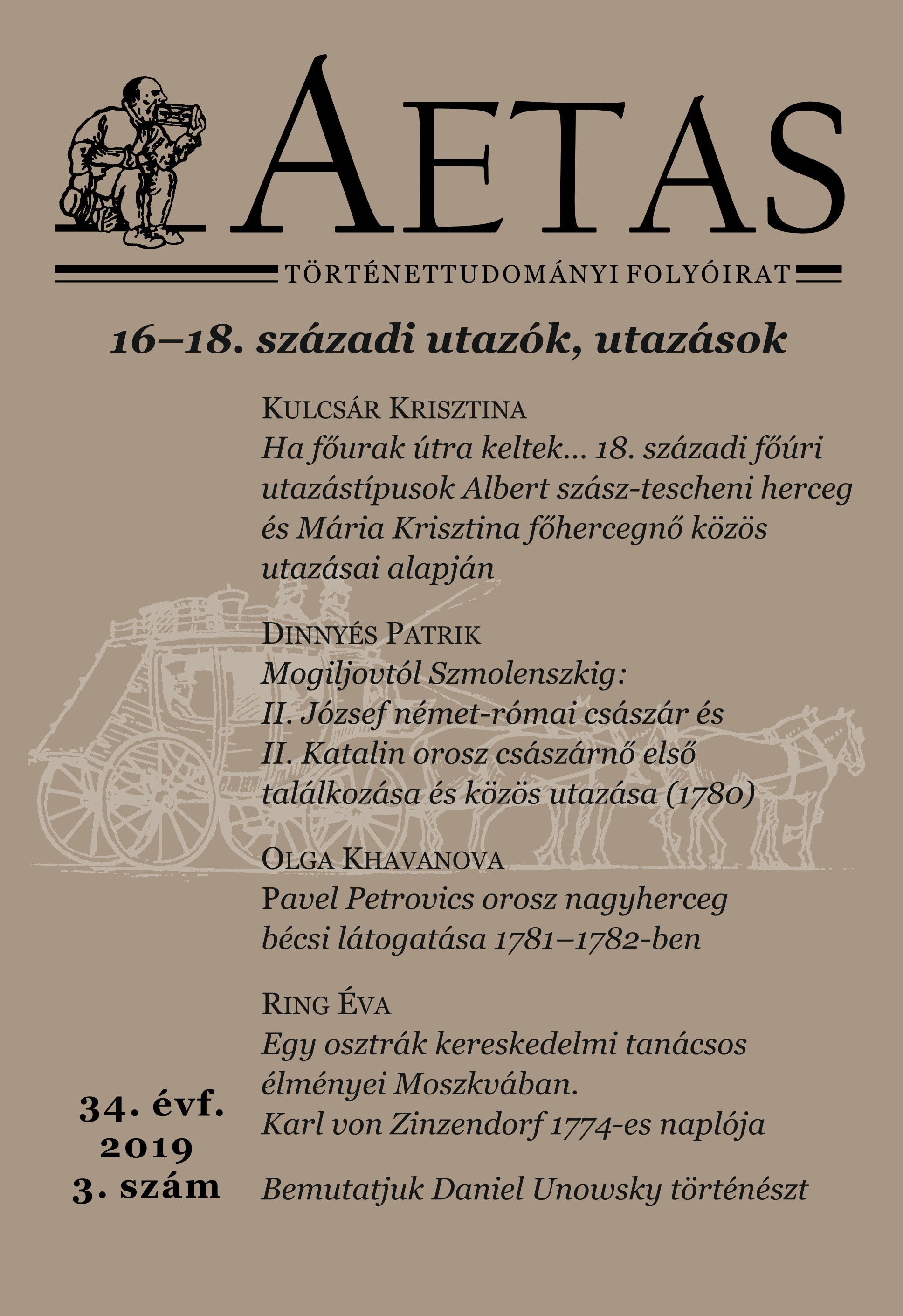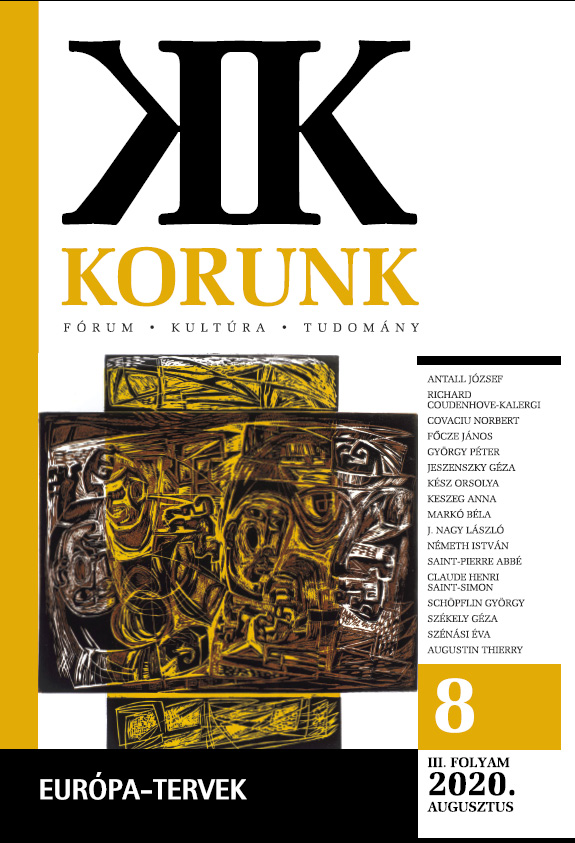
We kindly inform you that, as long as the subject affiliation of our 300.000+ articles is in progress, you might get unsufficient or no results on your third level or second level search. In this case, please broaden your search criteria.


As is true of most great turning points in world history, the changes of regime in East-Central and Southeastern Europe in 1989-1990 were brought about by the concatenation and interplay of several internal and external factors. Fundamental among these was the realignment of international power relations. The Soviet-American rivalry, ongoing since the end of World War II, culminated in victory for the United States. In his essay, Ignác Romsics analyses the different phases and aspects of this struggle focusing in the 1980’s, that is the era of Ronald Reagan and Michael Gorbachev. He concludes that by 1989 the Brezhnev Doctrine was replaced by the so-called Sinatra Doctrine (“I did it my way”). It meant that in contrast to 1956, 1968 and even indirectly 1981, Communist elites in the Soviet bloc henceforth could no longer rely on the armed assistance of the Soviet Union. The future of the Eastern European Communist regimes now depended exclusively on their strength, their acceptance by society and their ability. And this sealed their fate. Within some months all of the Communist regimes having established after World War II with Soviet military and political help, collapsed and new, democratically elected parliaments and governments were formed.
More...
The title is borrowed from the 1995 volume of the poet Gáspár Nagy. Addressing his “writer kinsfolk”, the poems, essays and other texts of this book emphasize our common fate. The similar function of culture and literature was essential in the context of intellectual resistance. The zone is none other than Central and Eastern Europe, the region between the Baltic, the Adriatic and the Black Sea, while the time is that of political transformation: 1988-1989. The essay reflects on the Hungarian transition from a comparative perspective, with a view to the relationships, parallels and differences. The events in Poland had the greatest impact on Hungary. From the year 1988, almost like in 1956, the Polish and Hungarian events mutually supported each other. Another important aspect consists in the situation of the trans-border Hungarians (especially in Romania).
More...
The study discusses the following issues: the takeover of power in Czechoslovakia; the rise of new political movements and the Independent Hungarian Initiative (Független Magyar Kezdeményezés); the legitimization of the takeover; the election campaign and the anti-Hungarian demonstrations; the parliamentary election
More...
The western powers have not been unanimous in the appreciation of the German unification. France and Great Britain viewed the newly emerging Central European order with historical doubts. The United States could also not stay away from these events, since the bipolar order gained new building blocks. The leadership of the GDR envisioned a confederation of the two states until February 1990, while Chancellor Kohl wished to see the integration of the GDR into the Federal Republic of Germany. The focus of the negotiations shifted increasingly toward the Soviet-West German relations, due to the liquidity of the latter. The credit contract signed on June 18 first guaranteed a loan of 5 billion Deutsche Marks to the Soviet Union; the „London Declaration” of the NATO and the massive loan from Bonn ensured the survival of Gorbachev. In early September, the costs of the unification were established at 15 billion Deutsche Marks. At the formal meeting held on July 16, 1990, the parties agreed to conclude the negotiations with a binding international contract.
More...
The events of December 1989 began as a revolution, but ended as a regime change. The difference is one of depth: the process (i.e., the violent removal of the national communist leaders) went quite quickly in Romania; however, it left much “debris” behind. Romanian society has denied the old regime, but was not ready for complete regime change. Thus, the “new” leadership effectively meant a mixture of old and new. Our regime change was not completely successful, if one takes into account the current situation of the minorities – and especially of the Hungarian minority –, the discussions on the restitution of properties, which are still going on today, and the continuous fight between traditionalism and modernism.
More...
The study analyses the political situation in Yugoslavia at the turn of the 1980s and 1990s. It presents Milošević’s „antibureaucratic revolution”, the attempt of democratic transition (emergence of political pluralism, first multiparty elections) and the interrepublican conflicts about federation, confederation and asymmetric state union. Its final conclusion is that a joint Yugoslav regime change was impossible, as the republics failed to reach agreement on statehood, mainly because of Serbia’s lack of willingness to compromise. After 1991, wars blocked the democratic transformation of the independent republics, leading to the emergence of so-called hybrid regimes in the successor states, except Slovenia.
More...

Iván Balog: The Rehabilitation of István Bibó; Gábor Gyáni The Births of The Budapest Review of Books and the István Hajnal Society; Gábor Klaniczay: Why a new company?
More...


The Sleepers/Bez vědomí/Eszmélet/Sub acoperire. HBO Europe, r. Ivan Zachariáš, 2019.
More...

For many years, State Security built the system to control society fully in line with the ideas and needs of the service. The network of informers is obviously the most well-known aspect of the system. However, there was a system of real physical control and surveillance, too. Fragments of documentation have been preserved in the archival collection of the Surveillance Department concerning some of the locations used. These materials primarily contain organisational, technical and economic data. It is difficult, however, to match the locations with specific cases of operative work.
More...
The study analyses the political and social situation in Slovakia during the late 80s as well as historical changes in 1989 that led to the fall of the communist regime. The study provides overview of the key historical events: gradually brought weakening of the regime, changes within the communist party and increase of the opposition activities. In the focus are the events of November and December 1989 and crucial events that led to the fall of the regime. Special attention is devoted to the activities of the youth and student movement in Slovakia, especially the march of the students in Bratislava on 16 November. This march can be considered as a prologue of the Gentle Revolution in Slovakia and a springboard for the involved students. They, bolstered by the Prague events, undertook an open protest at the university and creation of the students strike committee, first at the Slovakia. The author also deals with the establishing and development of the movement Public against Violence in November 1989 and to the discussions of the round table between the representatives of the communist party and Public against Violence. This discussion started the process of transformation from the totalitarian communist regime into the democracy.
More...
An interdisciplinary research program of political science and history addresses the question, to which extent historical events determine the evolution of a given community’s political culture. Present study approaches this issue by comparing 20th-century Hungarian and Slovak history and political thinking. From the analysis it can be seen that the idea of national (community) emancipation and individual emancipation were often confronted with each other, and this divide was further reinforced by the cultural cleavage between traditionalism and modernism. In contrast, in Slovak political thinking, the national and individual agendas of the emancipation of society were intertwined, moreover, the “national thought” found allies in the representatives of modernism. Thus, cleavages within Slovak politics did not deepen in the way that can be observed in the Hungarian case. However, the peculiar development of the Slovak political culture has led to weak ideological schemes to be followed by the voters and to form political preferences, which results in a fluid and unstable political structure.
More...
Thirty years ago, decisions were taken that fundamentally determined the geopolitical situation of today’s Europe. NATO still exists and American troops continue to be stationed on our continent. The study, based on international and Hungarian literature, and documents already available in the NATO Archives, the French Foreign Ministry Archives and the National Archives of Hungary, illustrates how the 1989–1991 Eastern European regime change affected the North Atlantic Alliance, and thus the current security situation in Europe. Celebrating its 40th anniversary in 1989, the alliance faced many challenges. The turbulent transformation of Eastern Europe and Eastern–Western relations is particularly significant. Thus, the North Atlantic Alliance’s eastern security environment has changed radically. The rival military alliance, the Warsaw Pact, gradually eroded and then dissolved in July 1991. By the end of the year, the Soviet Union itself had disintegrated. However, NATO security experts have identified new threats as well as changes that are favourable to them. They feared the destabilization of an unmoved Eastern European region for decades: nationalism suppressed by the Soviet rule until then, social upheavals triggered mass movements, and sharp conflicts began to emerge between individual states in the region. As a first step in the transformation of the Alliance, the doctrine of the use of military force and military tools changed radically. Crisis prevention and crisis management have become NATO’s new mission. Opening up to Eastern Europe was also an important element of the transformation. Intensive networking has begun in the military and political spheres towards the region.
More...
In the spring of 1990, the first Taiwanese representation in Eastern Europe was established in Budapest. The present study examines the process and international context of Hungarian– Taiwanese bilateral negotiations leading to the opening of the Taipei Trade Office. First, the article reviews the international relations of the Taipei government and the relationship between Taiwan and communist China during the Cold War. This is followed by the detailed analysis of the process and outcome of Hungarian–Taiwanese negotiations, based, primarily, on Hungarian archival documents. Hungarian politicians in their dealings with Taiwan always had to take into account China’s political sensitivities and the possible consequences of their actions on Sino–Hungarian relations. In the second half of the eighties, therefore, Hungary regarded Taiwan only as a trading partner. The process leading to the opening of the Taipei Trade Office began with the democratization of political life in Taiwan in 1987 and the subsequent opening toward Eastern European socialist countries. When the Taipei leadership, seeking broader international recognition, initiated bilateral talks with Hungary, Hungarian leaders focused on the development of trade relations only. The summer of 1989 marked a turning point in Sino–Hungarian relations. The consequences of the Tiananmen Square massacre in China’s domestic situation and international position and the possibility of a systemic change in Hungary affected Sino–Hungarian political relations and the scale of Hungarian–Chinese bilateral trade. This, in turn, encouraged the Hungarian leadership to embark on negotiations leading to the establishment of Taiwanese representation. Although outright political recognition was out of question, the endorsement of the establishment of a semi-official Taiwanese representative office in Budapest was a bold decision. In the autumn of 1989, the Hungarian leadership urged economic contacts with Taiwanese investors and financial institutions because economic liberalization in Hungary resulted in a financial crisis and in Budapest’s view Taiwanese investment and financial assistance could contribute to easing the situation. The Taiwanese side, in exchange for greater international visibility, was willing to engage in financial cooperation.
More...
Among the Slavic-speaking nations of the former Yugoslavia, the Croatians and Slovenians are least considered to have had more negative than positive consequences for the dissolution of socialist Yugoslavia. The reason why the population of Croatia has a more negative attitude towards the second Yugoslav state, has very complex historical, political, ideological and economic reasons, not least due to the significant differences between the two nationalisms. Along with gaining independence, both in Croatia and Slovenia, it has become clear that there is a serious fragmentation within the public and academic circles about World War II and the post-war system, which has also had its impacts on historiography. In the Slovenian and Croatian historiography, interest about the history of the Second Yugoslavia began to pick up again in the early 2000s, and from the mid-2000s onwards, scholars began to place their research in a broader context, large-scale conferences have also been organized in both countries. The establishment of research institutes in the 2010s was a major step forward in the scientific research of the period.
More...
The aim of the present study is to review the most important events and conflicts of the Hungarian–Romanian inter-state relations that influenced the situation of the Hungarian minority in Romania from the first half of the 1970s to the first years of the 1990s. The paper analyzes the responses and measures taken by the Hungarian Government and the Hungarian minority elites from the perspective of inter-state level in order to vindicate the rights and interests of Hungarian minorities in Romania. The author pointed out that the Hungarian Government followed two main strategies to improve the situation of the Hungarian minority community. Firstly, at bilateral level the Party leadership exhausted all diplomatic means to support its ethnic kin. Secondly, in order to advocate minority rights violations the Hungarian Government, diaspora organizations (HHRF) and other non-state actors sought to internationalize the claim-making of Hungarian minorities. As the events of the late 1980 and early 1990 highlighted, this strategy had significant limits because the international forums and western states were more interested in conflictprevention and maintaining the regional stability than in pressuring state actors to adopt and implement minority-friendly legislation.
More...